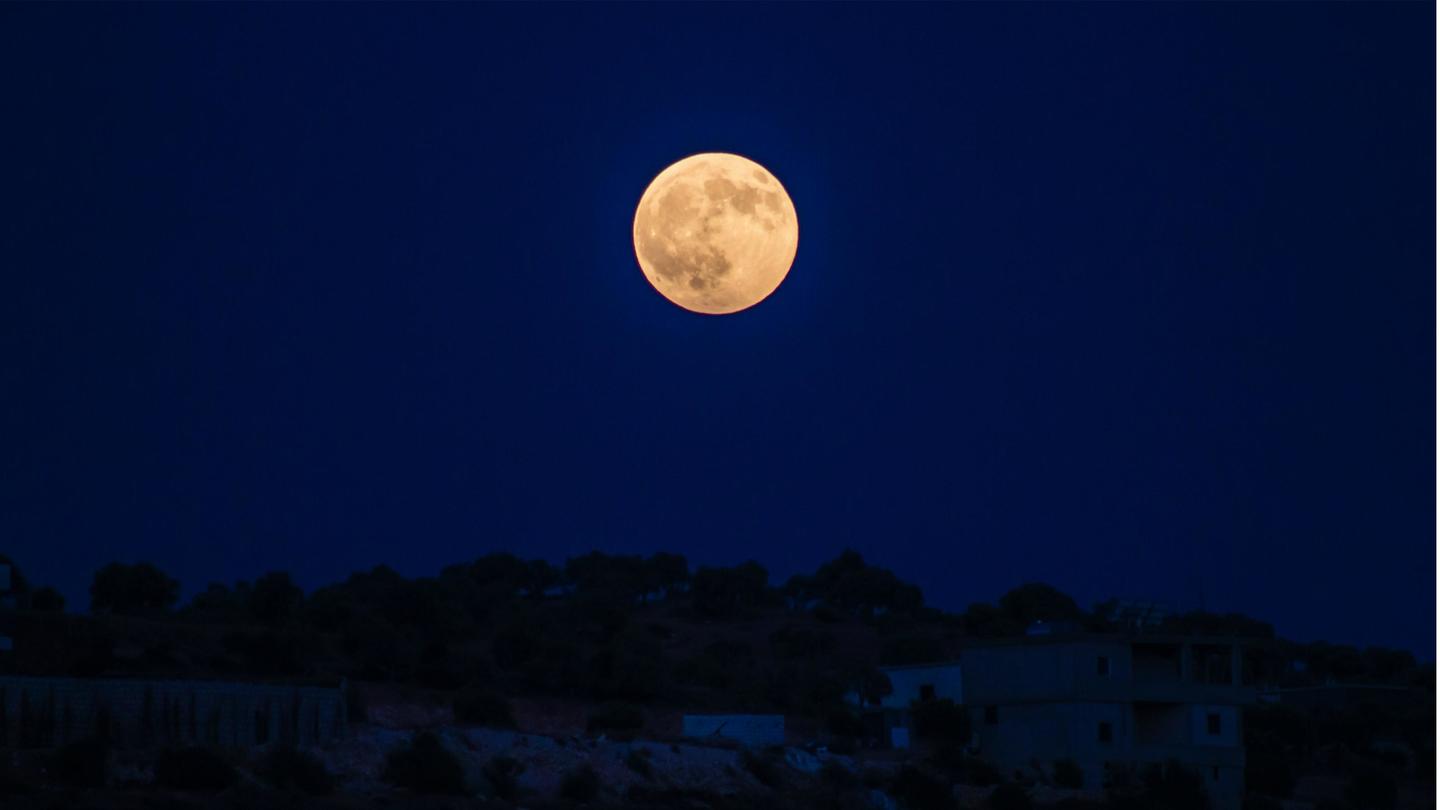
All about 2022's last supermoon and full moon calendar
What's the story
A full moon occurs when the sun and earth are aligned on the earth's opposite sides and the moon appears as a full circle. And it's a supermoon when the full moon is at or near the closest point in its orbit. This year's final supermoon, also called the Sturgeon Moon, will peak on August 11 at 7:06 am IST.
Supermoons
It will be last of four supermoons in a row
According to NASA eclipse watcher Fred Espenak, August's full moon will be the fourth of four supermoons in a row. After witnessing the biggest moon of the year, you can watch the last supermoon from August 10-12. A full moon is not always perfectly full. The moon is 100% full when it aligns with the earth and the sun perfectly, producing a lunar eclipse.
Names
The moon names correspond to seasonal markers
Several cultures assigned distinct names to each month's full moon and the names often correspond to seasonal markers. For example, in the northern hemisphere, the Harvest Moon occurs at the end of the growing season i.e. September or October while the Cold Moon occurs in December. In the southern hemisphere, the cold moon occurs in June while the harvest moon occurs in March.
Dates
List of 2022's full moons
According to NASA, these are the dates when the full moons will occur this year: January 17- Wolf Moon February 16- Snow Moon March 18- Worm Moon April 16- Pink Moon May 16- Flower Moon June 14- Strawberry Moon July 13- Buck Moon August 11- Sturgeon Moon September 10- Harvest Moon October 9- Hunter's Moon November 8- Beaver Moon December 7- Cold Moon
Phases
Different phases of the moon- new and first quarter moon
There are four phases of the moon - new moon, first quarter moon, full moon, and third-quarter moon. The moon is between the sun and the earth at the new moon following which it moves toward the earth. When the moon is 90 degrees away from the earth, it's called the first quarter as it is a quarter of the orbit away from earth.
Back to new moon
The other phases of the moon
After a few days, over half of the moon's face appears to be getting sunlight. When it moves 180 degrees, the sun, earth, and moon form a line and this is called a full moon. After a few days, it moves another quarter toward the earth, taking third quarter position. Finally, the moon moves back to the new moon starting position.
Supermoons
2023, 2024 and 2025 expected to see consecutive full supermoons
According to Fred Espanak, an eclipse expert and retired NASA astrophysicist, the Sturgeon moon will occur when the moon is within 90% of its closest approach to earth, making it a "supermoon." Although three supermoons have been witnessed in May, June, and July so far, supermoon streaks are not entirely uncommon. Even 2023 will see four consecutive full supermoons followed by 2024 and 2025.